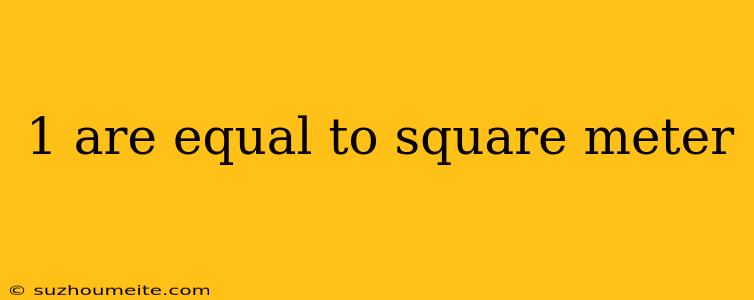1 Are Equal to Square Meter: Understanding the Conversion
Are you struggling to convert between are and square meters? Do you want to know how many square meters are in one are? Look no further! In this article, we will explore the conversion between are and square meters, and provide you with a clear understanding of how to make the calculation.
What is an Are?
Before we dive into the conversion, let's first define what an are is. An are is a unit of area, primarily used in measuring land and real estate. It is equal to 100 square meters, making it a convenient unit for calculating large areas.
What is a Square Meter?
A square meter, on the other hand, is the base unit of area in the International System of Units (SI). It is defined as the area of a square with a side length of one meter. Square meters are commonly used in architecture, engineering, and construction to measure the area of buildings, rooms, and other spaces.
Converting Are to Square Meters
Now, let's get to the conversion! As mentioned earlier, one are is equal to 100 square meters. This means that if you have an area of 1 are, you can convert it to square meters by multiplying it by 100.
Formula:
1 are = 100 m²
Example:
If you have a plot of land that measures 2 are, you can convert it to square meters as follows:
2 are = 2 x 100 m² = 200 m²
Converting Square Meters to Are
If you need to convert square meters to are, you can simply divide the number of square meters by 100.
Formula:
1 m² = 0.01 are
Example:
If you have a room that measures 150 m², you can convert it to are as follows:
150 m² = 150 ÷ 100 = 1.5 are
Conclusion
In conclusion, converting between are and square meters is a straightforward process. By remembering that 1 are is equal to 100 square meters, you can easily make the conversion. Whether you're working in real estate, architecture, or engineering, understanding this conversion will help you to more accurately measure and calculate areas.
